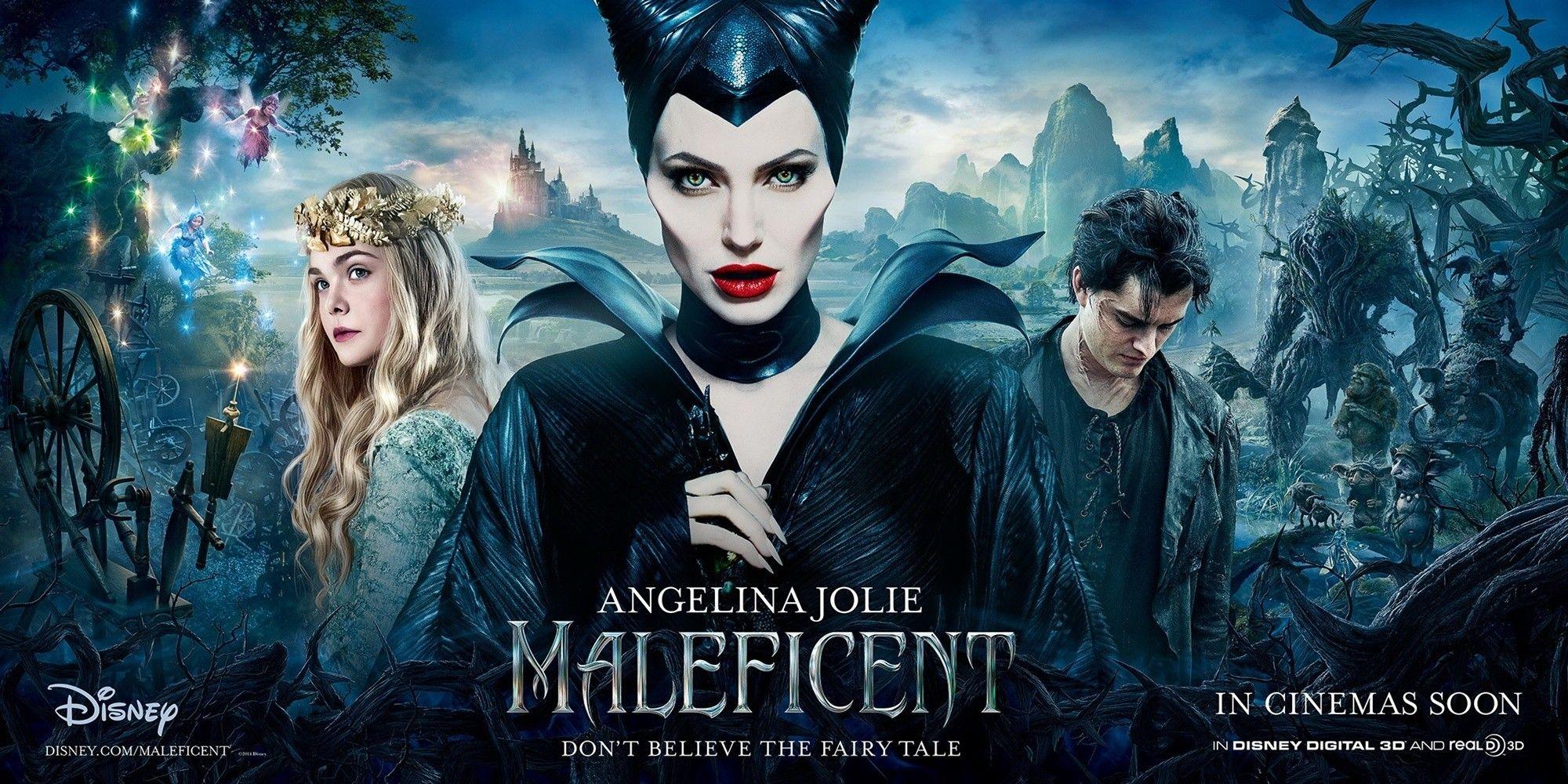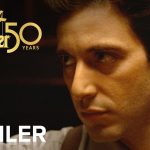Maleficent (2014)

Maleficent (2014) is a fantasy adventure film directed by Robert Stromberg and produced by Walt Disney Pictures. The film is a reimagining of Disney’s 1959 animated classic Sleeping Beauty, offering a fresh perspective on one of the most iconic villains in fairy tale history. With a screenplay by Linda Woolverton, Maleficent stars Angelina Jolie in the titular role and explores themes of betrayal, redemption, and the complexities of good and evil. This essay delves into the film’s plot, themes, character development, visual style, and its impact on the fairy tale genre.
Maleficent reexamines the story of Sleeping Beauty from the perspective of its antagonist, Maleficent. The film begins with Maleficent (Angelina Jolie) as a young fairy living in the idyllic Moors, a magical land filled with mystical creatures. Her life takes a dark turn when she is betrayed by her childhood friend, Stefan (Sharlto Copley), who becomes King Stefan after seizing power through deceit.
The betrayal profoundly affects Maleficent, leading her to curse Stefan’s daughter, Aurora (Elle Fanning), with a spell that will cause her to fall into a deep sleep on her sixteenth birthday. The curse is a response to Stefan’s betrayal and represents Maleficent’s internal struggle with her own feelings of vengeance and heartbreak.
As Aurora grows up, Maleficent becomes increasingly conflicted. She observes Aurora’s kindness and innocence, leading to a change of heart. The film’s narrative reveals Maleficent’s deeper motivations and her genuine care for Aurora, challenging the traditional notions of good and evil. The plot culminates in a powerful resolution where Maleficent’s true nature is revealed, and her actions ultimately lead to redemption and forgiveness.
The primary themes of Maleficent include the complexity of human emotions, the nature of forgiveness, and the consequences of betrayal. The film explores how personal pain and betrayal can shape one’s actions and how redemption and forgiveness can lead to healing and transformation. By presenting a nuanced portrayal of Maleficent, the film challenges traditional fairy tale dichotomies and offers a more layered understanding of its characters.
The characters in Maleficent are richly developed, contributing significantly to the film’s depth and emotional impact:
Maleficent: Angelina Jolie’s portrayal of Maleficent is both captivating and multifaceted. Jolie brings a sense of gravitas and complexity to the character, capturing her initial malevolence, her subsequent vulnerability, and her eventual redemption. Jolie’s performance transforms Maleficent from a one-dimensional villain into a deeply sympathetic character.
Aurora: Elle Fanning’s Aurora is portrayed with a blend of innocence and resilience. Fanning’s performance conveys Aurora’s kindness and purity, making her a compelling and endearing protagonist. Aurora’s interactions with Maleficent highlight the latter’s internal struggle and contribute to the film’s emotional resonance.
Stefan: Sharlto Copley plays King Stefan with a mix of ambition and regret. His character’s actions drive much of the film’s conflict, and Copley’s performance reflects the complexity of Stefan’s motivations and his ultimate downfall.
Supporting Characters: The film also features notable supporting characters, such as the three good fairies (Imelda Staunton, Juno Temple, and Lesley Manville), who provide comic relief and contribute to Aurora’s upbringing. Their performances add humor and charm to the narrative.
Robert Stromberg’s direction of Maleficent is characterized by its dark and atmospheric tone, combined with visually stunning imagery. Stromberg, known for his work in production design, brings a unique visual style to the film, creating a magical and immersive world that enhances the story’s fantasy elements.
The screenplay by Linda Woolverton successfully reimagines the classic fairy tale by focusing on Maleficent’s perspective. The script provides a fresh take on familiar characters and events, offering a new narrative that delves into the complexities of Maleficent’s character and motivations. Woolverton’s writing balances action, drama, and emotion, contributing to the film’s engaging and compelling storytelling.

The visual style of Maleficent is one of its most striking features. The film’s production design, including the depiction of the Moors and the dark, foreboding castle, creates a vivid and enchanting fantasy world. The use of CGI and practical effects blends seamlessly, bringing the magical creatures and landscapes to life with impressive detail.
The costume design, particularly Maleficent’s iconic horned headdress and elaborate gowns, is both imaginative and integral to the character’s portrayal. The film’s visual aesthetics contribute to its overall atmospheric and magical quality.

The film’s score, composed by James Newton Howard, enhances its emotional and dramatic moments. Howard’s music complements the film’s fantasy setting and character-driven narrative, adding depth to the storytelling and enriching the viewer’s experience.
The sound design, including the use of magical and atmospheric effects, contributes to the film’s immersive quality. The combination of music and sound effects helps to create a sense of wonder and tension, enhancing the impact of key scenes.

Maleficent received generally positive reviews from critics, who praised Angelina Jolie’s performance and the film’s visual spectacle. The film’s reimagining of the classic fairy tale was noted for its fresh perspective and emotional depth. Critics appreciated the film’s exploration of Maleficent’s character and its departure from traditional villain tropes.
The film’s success at the box office and its impact on the fairy tale genre underscore its significance. Maleficent contributed to a trend of reimagining classic stories from alternative perspectives and provided a new take on the concept of villains in fairy tales.
In conclusion, Maleficent (2014) is a remarkable film that redefines a classic fairy tale through its innovative storytelling and character development. Directed by Robert Stromberg and featuring a standout performance by Angelina Jolie, the film explores themes of betrayal, redemption, and the complexity of human emotions. Its visual style, engaging narrative, and fresh perspective on the villainous character of Maleficent make it a significant and memorable entry in the fantasy genre. Maleficent not only entertains but also challenges traditional notions of good and evil, offering a more nuanced and empathetic portrayal of its characters.










